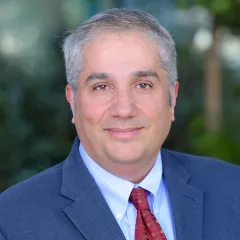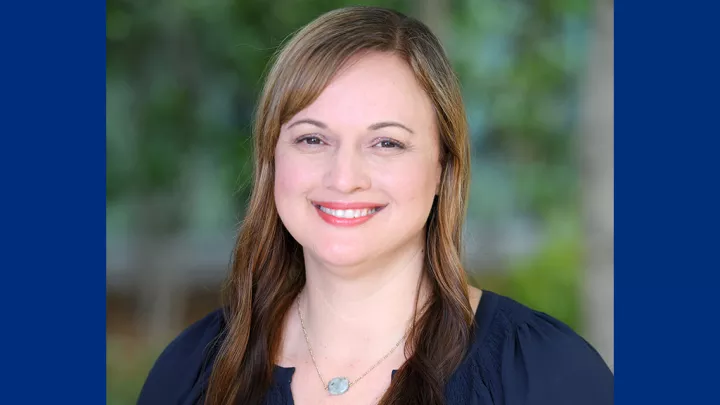
Shahab Asgharzadeh, MD
Education
University of Illinois College of Medicine
University of Chicago Medical Center: Pediatrics
University of Chicago Medical Center: Clinical Ethics; Children's Hospital Los Angeles: Pediatric Hematology Oncology
Accomplishments
Pediatrics: American Board of Pediatrics; Pediatric Hematology-Oncology: American Board of Pediatrics
Publications
Clinical Significance of Tumor-Associated Inflammatory Cells in Metastatic Neuroblastoma.
Asgharzadeh S, Salo JA, Ji L, Oberthuer A, Fischer M, Berthold F, Hadjidaniel M, Liu CW, Metelitsa LS, Pique-Regi R, Wakamatsu P, Villablanca JG, Kreissman SG, Matthay KK, Shimada H, London WB, Sposto R, Seeger RC. J Clin Oncol. 2012 Aug 27.
IL-15 protects NKT cells from inhibition by tumor-associated macrophages and enhances antimetastatic activity.Liu D, Song L, Wei J, Courtney AN, Gao X, Marinova E, Guo L, Heczey A, Asgharzadeh S, Kim E, Dotti G, Metelitsa LS. J Clin Invest. 2012 Jun 1;122(6):2221-33. doi: 10.1172/JCI59535. Epub 2012 May 8.
Novel pathways to erythropoiesis induced by dimerization of intracellular C-Mpl in human hematopoietic progenitors. Parekh C, Sahaghian A, Kim W, Scholes J, Ge S, Zhu Y, Asgharzadeh S, Hollis R, Kohn D, Ji L, Malvar J, Wang X, Crooks G. Stem Cells. 2012 Apr;30(4):697-708. doi: 10.1002/stem.1046.
Common variation at BARD1 results in the expression of an oncogenic isoform that influences neuroblastoma susceptibility and oncogenicity. Bosse KR, Diskin SJ, Cole KA, Wood AC, Schnepp RW, Norris G, Nguyen le B, Jagannathan J, Laquaglia M, Winter C, Diamond M, Hou C, Attiyeh EF, Mosse YP, Pineros V, Dizin E, Zhang Y, Asgharzadeh S, Seeger RC, Capasso M, Pawel BR, Devoto M, Hakonarson H, Rappaport EF, Irminger-Finger I, Maris JM. Cancer Res. 2012 Apr 15;72(8):2068-78. Epub 2012 Feb 20.
Antibody targeting of anaplastic lymphoma kinase induces cytotoxicity of human neuroblastoma. Carpenter EL, Haglund EA, Mace EM, Deng D, Martinez D, Wood AC, Chow AK, Weiser DA, Belcastro LT, Winter C, Bresler SC, Asgharzadeh S, Seeger RC, Zhao H, Guo R, Christensen JG, Orange JS, Pawel BR, Lemmon MA, Mossé YP. Oncogene. 2012 Jan 23. doi: 10.1038/onc.2011.647.
Neuroblastoma: issues in transplantation. Grupp SA, Asgharzadeh S, Yanik GA. Biol Blood Marrow Transplant. 2012 Jan;18(1 Suppl):S92-100.
Bioinformatics for copy number variation data. Warden M, Pique-Regi R, Ortega A, Asgharzadeh S. Methods Mol Biol. 2011;719:235-49.
NF1 is a tumor suppressor in neuroblastoma that determines retinoic acid response and disease outcome. Hölzel M, Huang S, Koster J, Ora I, Lakeman A, Caron H, Nijkamp W, Xie J, Callens T, Asgharzadeh S, Seeger RC, Messiaen L, Versteeg R, Bernards R. Cell. 2010 Jul 23;142(2):218-29.
Prognostic impact of gene expression-based classification for neuroblastoma. Oberthuer A, Hero B, Berthold F, Juraeva D, Faldum A, Kahlert Y, Asgharzadeh S, Seeger R, Scaruffi P, Tonini GP, Janoueix-Lerosey I, Delattre O, Schleiermacher G, Vandesompele J, Vermeulen J, Speleman F, Noguera R, Piqueras M, Bénard J, Valent A, Avigad S, Yaniv I, Weber A, Christiansen H, Grundy RG, Schardt K, Schwab M, Eils R, Warnat P, Kaderali L, Simon T, Decarolis B, Theissen J, Westermann F, Brors B, Fischer M. J Clin Oncol. 2010 Jul 20;28(21):3506-15. Epub 2010 Jun 21.
Prediction of human functional genetic networks from heterogeneous data using RVM-based ensemble learning. Wu CC, Asgharzadeh S, Triche TJ, D'Argenio DZ. Bioinformatics. 2010 Mar 15;26(6):807-13. Epub 2010 Feb 4.
Research
Shahab Asgharzadeh, MD, is the director of the Neuroblastoma Basic and Translational Program. He explores the mystery of why childhood tumors occur. His lab is working to identify the genetic differences in children who get tumors, or neuroblastoma, versus children who do not. His research is geared towards understanding the the different outcomes of neuroblastoma where the tumors spread all over the body. His research lab uses gene chips from tissue samples to determine the programming change in terms of the gene levels between the two types of tumors in patients; those who have benefitted from chemotherapy versus patients who have relapsed. Using gene expression data from the gene chips, they have found that the immune system cells within the tumor have been neglected over the years. They have also found that the immune cells are actually helping the tumors grow. They can now target the areas of tumors and are trying to change the behavior of the immune system cells so that they get rid of the tumor as opposed to helping the tumor. Asgharzedeh is working with new technologies to predict what patients may have been exposed to with a diagnosis of a particular cancer. He can extract information from gene chips to help predict the outcome of the patient’s diagnosis to better determine the right personalized care and treatment.
Visit the Asgharzadeh Laboratory.
Funding
- National Institute of Health (NIH)
Research Studies
The primary aim of this registry will be to identify genes and/or biologic and environmental factors that either cause these tumors or increase one's risk for developing them.
Media
Science Daily- Pediatric brain tumors can be classified noninvasively at diagnosis
CHLA Press Releases
Creating a Safe CAR T-Cell Therapy to Fight Solid Tumors in Children
CHLA Blog
Single Cell, Sequencing and CyTOF (SC2) Core
Looking for Acute Liver Failure Biomarkers in Children
A High-Tech Look at Rejection in Pediatric Liver Transplants


